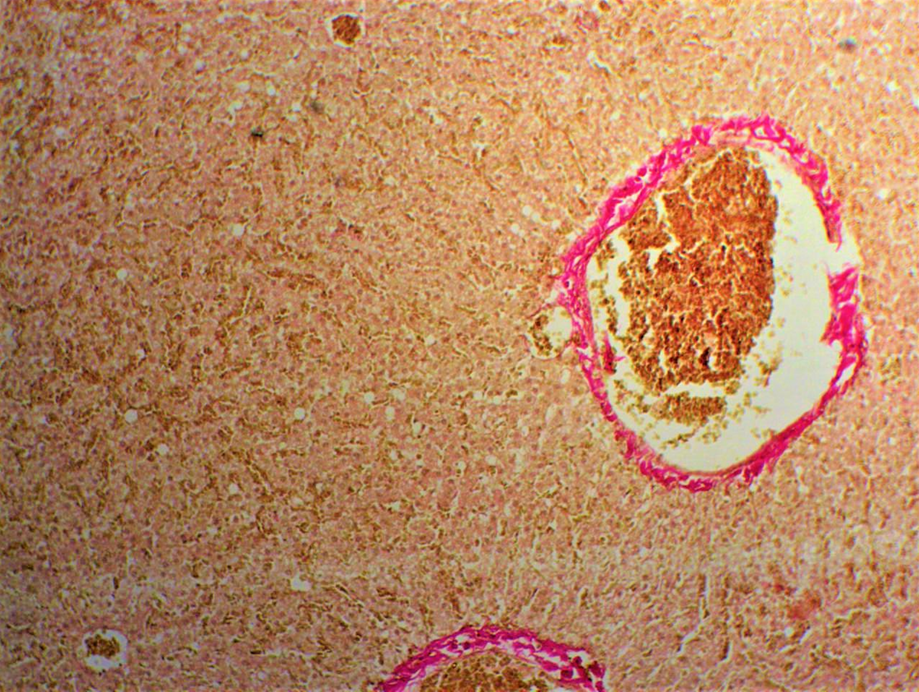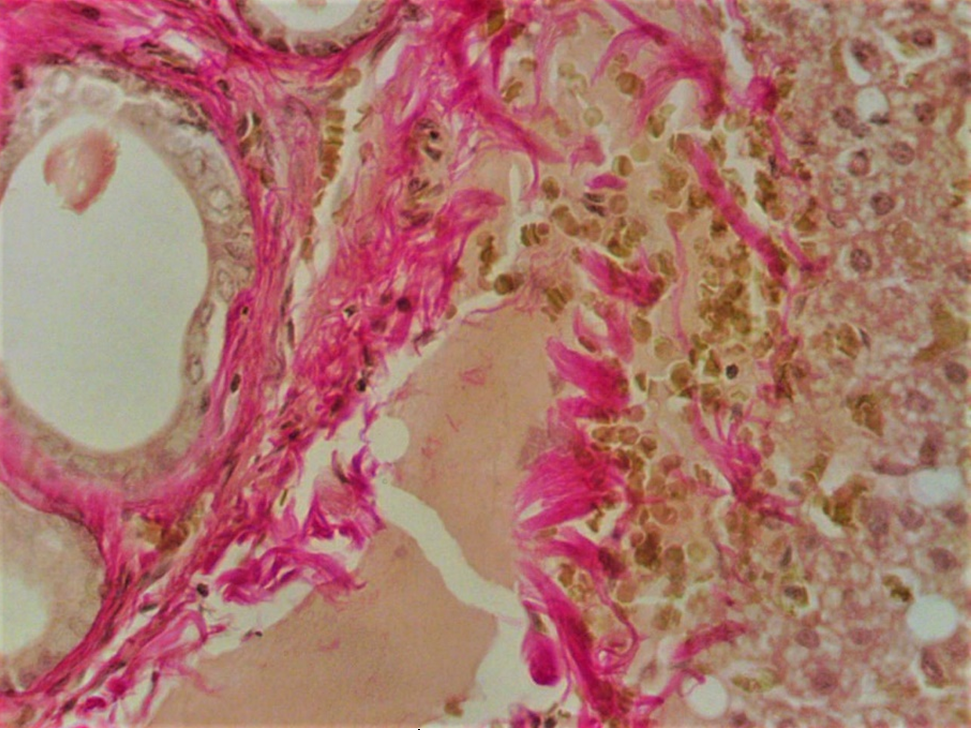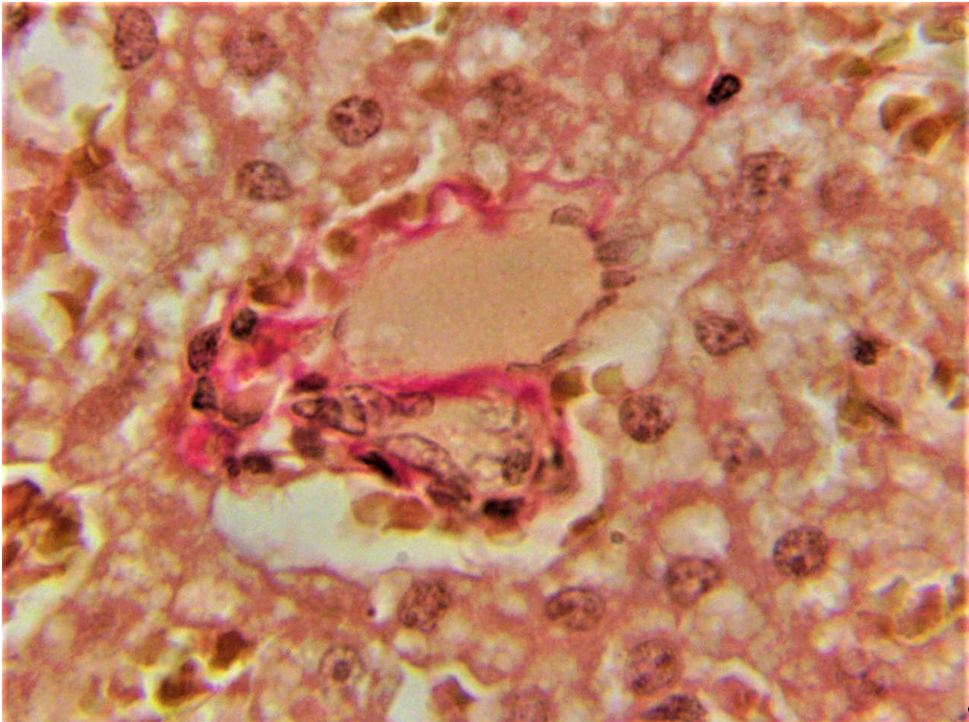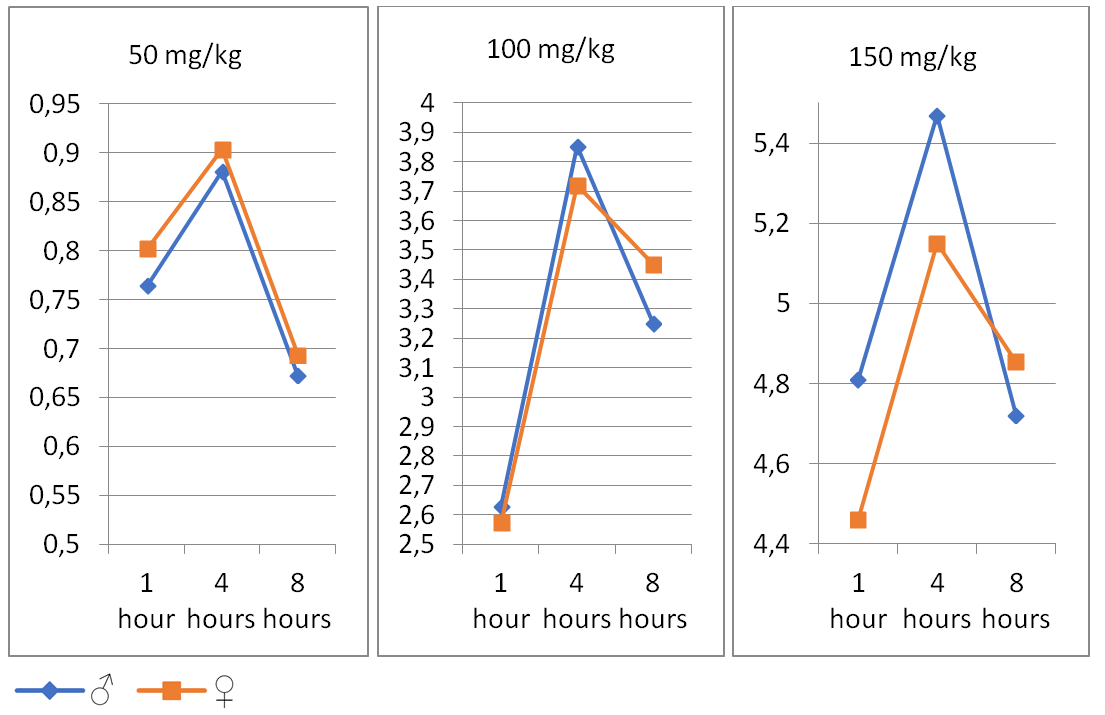ДОЗОЗАВИСИМЫЕ ОСОБЕННОСТИ КИНЕТИЧЕСКИХ КРИВЫХ КОФЕИНА В МОЧЕ ПРИ ИНДУЦИРОВАННОМ ТОКСИЧЕСКОМ ГЕПАТИТЕ
ДОЗОЗАВИСИМЫЕ ОСОБЕННОСТИ КИНЕТИЧЕСКИХ КРИВЫХ КОФЕИНА В МОЧЕ ПРИ ИНДУЦИРОВАННОМ ТОКСИЧЕСКОМ ГЕПАТИТЕ
Аннотация
Печень – один из важнейших органов в организме животного. Поэтому в ветеринарии очень важно диагностировать патологии печени для оценки состояния здоровья животных. Клиренс-тесты – это важные инструменты для оценки функций печени. Это специальные тесты, позволяющие определить скорость, с которой печень очищает кровь от определенных веществ. Кофеин – один из самых доступных препаратов для проведения клиренс-тестов. Фармакокинетика кофеина – это процесс его естественного метаболизма и выведения из организма. Кофеин относится к веществам, для которых печень играет решающую роль в метаболизме. Именно поэтому фармакокинетика кофеина может быть изменена при гепатопатологии, а тесты на клиренс кофеина могут быть использованы в диагностике таких патологий. Учитывая вышесказанное, целью данной статьи является определение изменений фармакокинетики кофеина при различных гепатопатологиях. Таким образом, использование клиренс-тестов является актуальным и эффективным подходом для диагностики и мониторинга здоровья печени.
1. Introduction
One of the most vital organs in an animal's body is the liver. It performs a number of tasks, such as detoxification, pharmacological biotransformation, crucial protein synthesis, and food metabolism. Therefore, in veterinary medicine, it is crucial to diagnose liver diseases in order to assess the health of animals
, , , .Clearance tests are an essential tool for evaluating liver function. These tests are specialized assessments that determine the rate at which the liver eliminates specific substances from the blood. Clearance tests measure the duration it takes for the body to eliminate a specific quantity of a substance from the bloodstream
, , , .If liver function is normal, clearance tests also show normal values. However, in the presence of pathologies (hepatits, hepatosis, fatty liver disease), liver function may be impaired, which is detected through changes in the results of clearance tests. For example, in liver failure, clearance levels decrease, indicating that the liver cannot effectively clear substances from the blood. One of the most accessible substances for conducting clearance tests is caffeine.
Caffeine pharmacokinetics is the process of its natural metabolism and elimination from the organism. Caffeine is one of the substances for which the liver plays a crucial role in metabolism. That’s why caffeine pharmacokinetics may be altered when hepatopathology occurs, and why caffeine clearance tests can be used in the diagnosis of such pathologies.
Normally, caffeine undergoes biotransformation in the liver. Enzyme cytochrome P450 1A2 is the main component for this transformation. Cytochrome turns caffeine into paraxanthine (3-methylxanthine) and theophylline (1,3-dimethylxanthine), which also have stimulating effects
, , , .The speed of caffeine metabolism can change if liver pathologies (cirrhosis, hepatitis, or fatty liver disease) take place. The main reason for that is a decrease in enzyme synthesizing function, including cytochrome P450 1A2. Therefore, caffeine levels may stay high for a longer period of time, leading to an enhanced pharmacological effect.
Considering the above, the goal of this article is to determine changes in caffeine pharmacokinetics with different hepatopathologies.
2. Research methods and principles
The research was carried out in the vivarium of the department of drug research and toxicology at the federal educational institution, St. Petersburg State University of Veterinary Medicine. The characteristics of the animals used, including species, age, weight, diet, and living conditions, were in line with previous experiments
.The research was conducted in compliance with the principles of the European Convention for the Protection of Animals used for scientific purposes, as well as following the guidelines of good laboratory and clinical practices (GLP and GCP) and the regulations set out in Directive 2010/63/EU of the European Parliament. The study protocol was approved by the bioethics' committee of the St. Petersburg State University of Veterinary Medicine.
Toxic hepatitis was induced following the method outlined in the Guide to the Experimental (Preclinical) Study of New Pharmacological Substances, edited by R. U. Khabriev, using ethylene chloride. The effectiveness of the induction was assessed based on standard clinical and biochemical indicators.
As there are no authorized sorbitol-containing injectable medications for animals available in Russia at the moment, we have produced a sorbitol-based solution for injection following the guidelines outlined in the official pharmacopoeia of the Russian Federation No. 15
.Three groups – six females and six males each—were selected from the experimental animals, and each received a subcutaneous injection of a 20% solution of caffeine sodium benzoate (Mosagrogen LLC, Russia) in increments of 50 mg/kg (50, 100, and 150), which is equivalent to pure caffeine. These dosages are warranted because, according to the majority of studies, the most consistent and measurable concentrations of caffeine in the blood plasma are obtained at this particular step, which falls within the drug's therapeutic range
, , , . The Physiobelt wireless system for recording and analyzing animal ECG (Neurobiotics, Russia) was used to record electrocardiogram parameters in each animal after 10 minutes of administration. This allowed for the exclusion of animals from the experiment if there were any adverse reactions to the administered drug affecting the cardiovascular system.The results obtained were compared with the previous series of experiments by superimposing pharmacokinetic graphs of exogenous caffeine elimination curves.
3. Main results
Toxic hepatitis was confirmed by histological examination at the end of the experiment. Histological sections of the liver are shown in Figures 1-3.

Figure 1 - Toxic hepatitis in an experimental rat
Note: magnification 10x10; Van Gieson staining

Figure 2 - Toxic hepatitis in an experimental rat
Note: magnification 10x40; Van Gieson staining

Figure 3 - Toxic hepatitis in an experimental rat
Note: magnification 10x100; Van Gieson staining
The results of trace levels of caffeine in the urine of laboratory animals are presented in Table 1 and Figure 4.
Table 1 - Urinary caffeine levels after exogenous caffeine administration
Administered dosage of the medicine (calculated as pure caffeine) | 50 mg/kg | 100 mg/kg | 150 mg/kg | |||
T after injection / sex of animals | ♂ | ♀ | ♂ | ♀ | ♂ | ♀ |
1 hour | 0,764± 0,053 | 0,802± 0,042 | 2,628± 0,174 | 2,573± 0,217 | 4,81± 0,23 | 4,46± 0,38 |
4 hours | 0,881± 0,037 | 0,904± 0,076 | 3,855± 0,319 | 3,721± 0,157 | 5,47± 0,38 | 5,15± 0,41 |
8 hours | 0,672± 0,064 | 0,693± 0,018 | 3,253± 0,126 | 3,452± 0,092 | 4,721± 0,641 | 4,854± 0,379 |

Figure 4 - The results of trace levels of caffeine in the urine of laboratory animals
The pharmacokinetic curves obtained in this study, which describe the levels of exogenous caffeine in the blood plasma, can be used in the future as one of the methods for early diagnosis of such pathologies.
4. Conclusion
Clearance tests are an essential tool for assessing liver function. They enable the evaluation of the rate at which a substance is removed from the blood by the liver, allowing for the assessment of its performance. Clearance tests aid in the early detection of liver dysfunction, facilitating the implementation of corrective measures. Therefore, the utilization of clearance tests is a pertinent and efficient approach for diagnosing and monitoring liver health.
